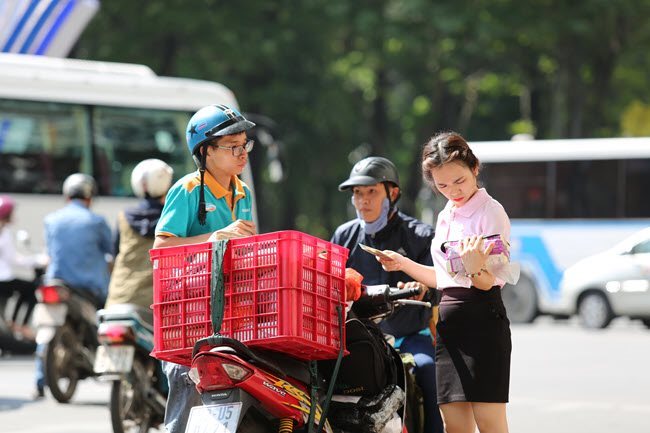 |
|
The impact of global inflation on Vietnam’s economy is forecast to be unsubstantial in 2020
|
According to the latest report by Bao Viet Securities Company, the global economy may exhibit three outstanding characteristics in 2020.
First, after a year of rather drastic falls in 2019, global economic growth may slightly recover this year. It will possibly bottom out in the first two quarters of 2020 before actually experiencing a positive rate in the second half of the year. Growth, however, will not be even among nations around the world.
Developed economies—such as the United States, the European Union and Japan—are predicted to slow down growth while emerging economies—like India, Indonesia and Brazil—may possibly generate higher growth.
The second factor relates to external financial conditions. In 2020, central bankers across the globe are likely to keep their monetary policies the same as those pursued in late 2019.
In such a context, continuous draconian cuts on interest rates may be out of the question. Conversely, there is a very low possibility that central banks will hike these rates. The U.S. Federal Reserve has said it will retain its rate at 1.5%-1.75% in 2020.
However, if the U.S. growth falls much deeper than expected, at around 2%, Fed may reconsider its decision as it has considerably bigger leeway to do so than its counterparts in the EU and Japan have.
Thirdly, the Sino-American trade war should receive due attention. Although the tension between the two strongest economic powerhouses has defused to a certain extent following the announcement of a “phase one” deal, the truce remains fragile, which may destabilize the global economy.
In the backdrop of the U.S. presidential election in November this year, President Donald Trump is likely to resort to trade protectionism soon to win support from U.S. voters.
The macroeconomic picture will not have many fluctuations
What will all the above external economic affairs affect the Vietnamese economy this year?
All considered, the overall GDP growth of 6.8%-7% is attainable.
Viewed from the supply side, the foreign direct investment (FDI) sector has over the years contributed around 20% of Vietnam’s GDP and has generated a growth rate much higher than the national growth rate.
There has existed also a response lag between registered FDI capital and the actual growth of this sector in the years that follow. During 2018 and 2019, the growth of registered FDI capital in Vietnam—excluding transactions in share purchases or capital contribution to operational company—tended to decline. Therefore, the FDI sector’s growth may decelerate in the few years to come.
If viewed from the demand side, two factors should be noted as they are detrimental to Vietnam’s GDP growth in 2020. One is the growth rate in the country’s key export markets—namely the EU, China and Japan—is forecast to stage only a modest recovery.
Meanwhile, it is very unlikely that export stateside can be as impressive as in 2019, when a rate of 28% was achieved, due to tightened regulations on the country of origin. Two is about consumption in Vietnam where retail sales may be lower than in 2019 as inflation soars, in particular in the first half of 2020.
On the other end of the spectrum, a support for GDP growth in 2020 is Vietnam’s total investment which is deemed to rise by 13%, a slight rise over 2019. The main reason may be ascribable to the amended Public Investment Law which is officially valid this year. The revised law is expected to improve the rate of disbursement.
The impact of global inflation on Vietnam’s economy may be unsubstantial. Since 2014, Vietnam’s inflation has been stable at under 4% per year, principally assisted by controlled credit growth and stable money supply (M2), at 15%-20%. Last year, credit growth was only 13%, which helped keep monetary inflation under control.
The salary growth in 2020 is not high, which thus minimizes demand-pull inflation. However, the highest risk is projected to come from cost-push inflation. Pork price has risen sharply during the past three months, which boosted year-on-year (YoY) inflation by the end of December to 5.2%.
According to Bao Viet Securities Company’s report, CPI YoY will be especially high (5%-5.5%) in the first half of the year before cooling down toward the end of the year. Generally speaking, CPI YoY by the end of 2020 will be around 3.2%-3.6% while the average CPI in 2020 may be more or less 4%.
When it comes to foreign exchange, Vietnam has enjoyed a surplus since 2016. This marks a difference from 2015 and the 2007-2011 period (when the dong depreciated quickly).
Notably, the surplus in balance of payments comes from both current account and capital account.
Vietnam’s overall balance of payments is expected to continue its high surplus in 2020 due mainly to trade surplus, FDI inflows and stable remittances.
The pressure piled on foreign exchange rate, if any, comes principally from the weakening of the Chinese yuan as well as other currencies of emerging economies, and may enfeeble the competitiveness of Vietnam’s exports.
However, the risk of being included in the U.S. lists of “currency manipulators” is substantial enough to prompt the central bank to take extreme caution when depreciating the dong. The domestic currency is forecast to lose at most 2% of its value this year. SGT
Linh Trang
 Vietnam’s macroeconomy in 2020 is forecast to face somewhat more challenges of growth and inflation than in 2019. However, basically, the overall picture will not have many hues different from last year.
Vietnam’s macroeconomy in 2020 is forecast to face somewhat more challenges of growth and inflation than in 2019. However, basically, the overall picture will not have many hues different from last year.